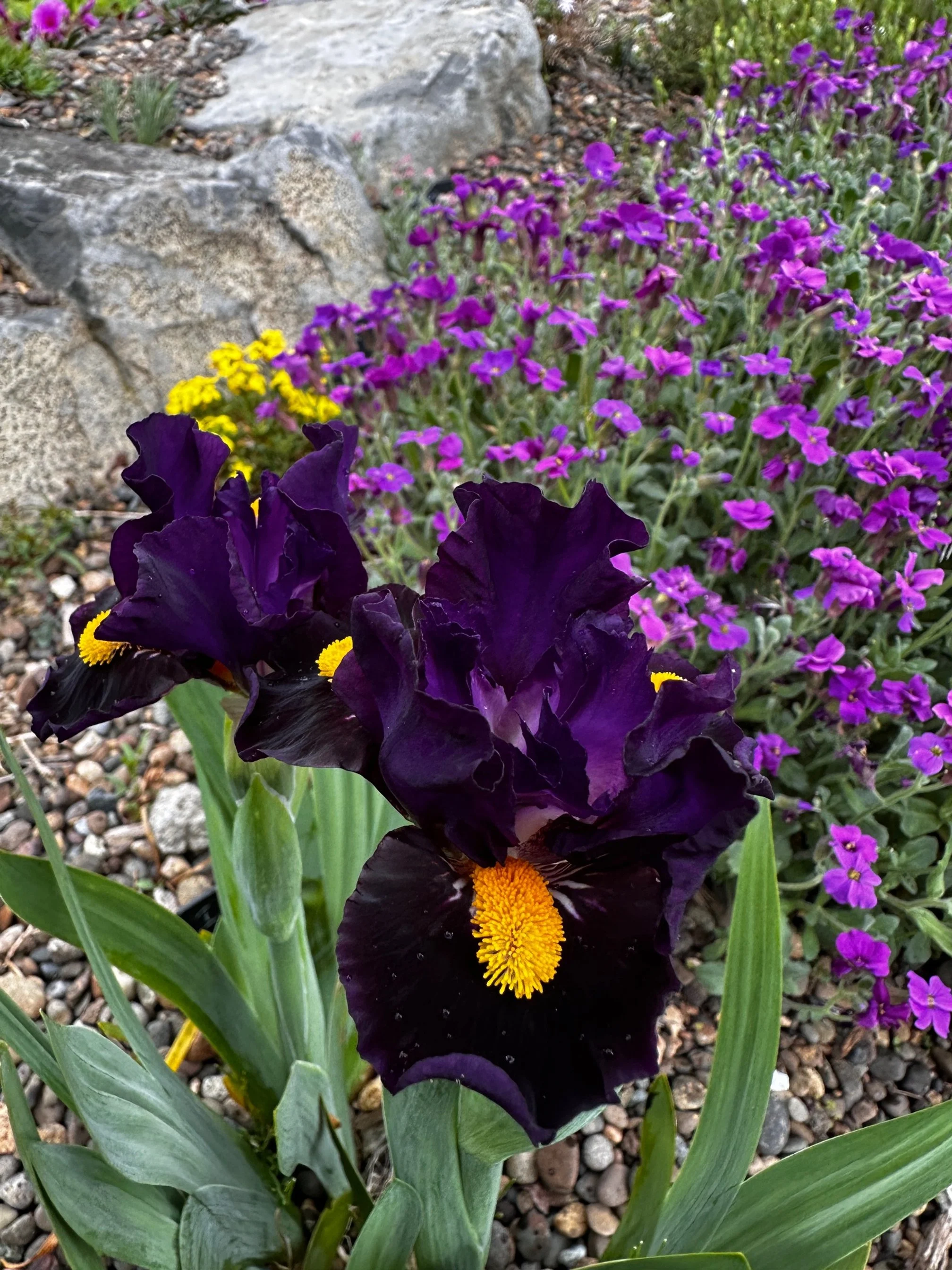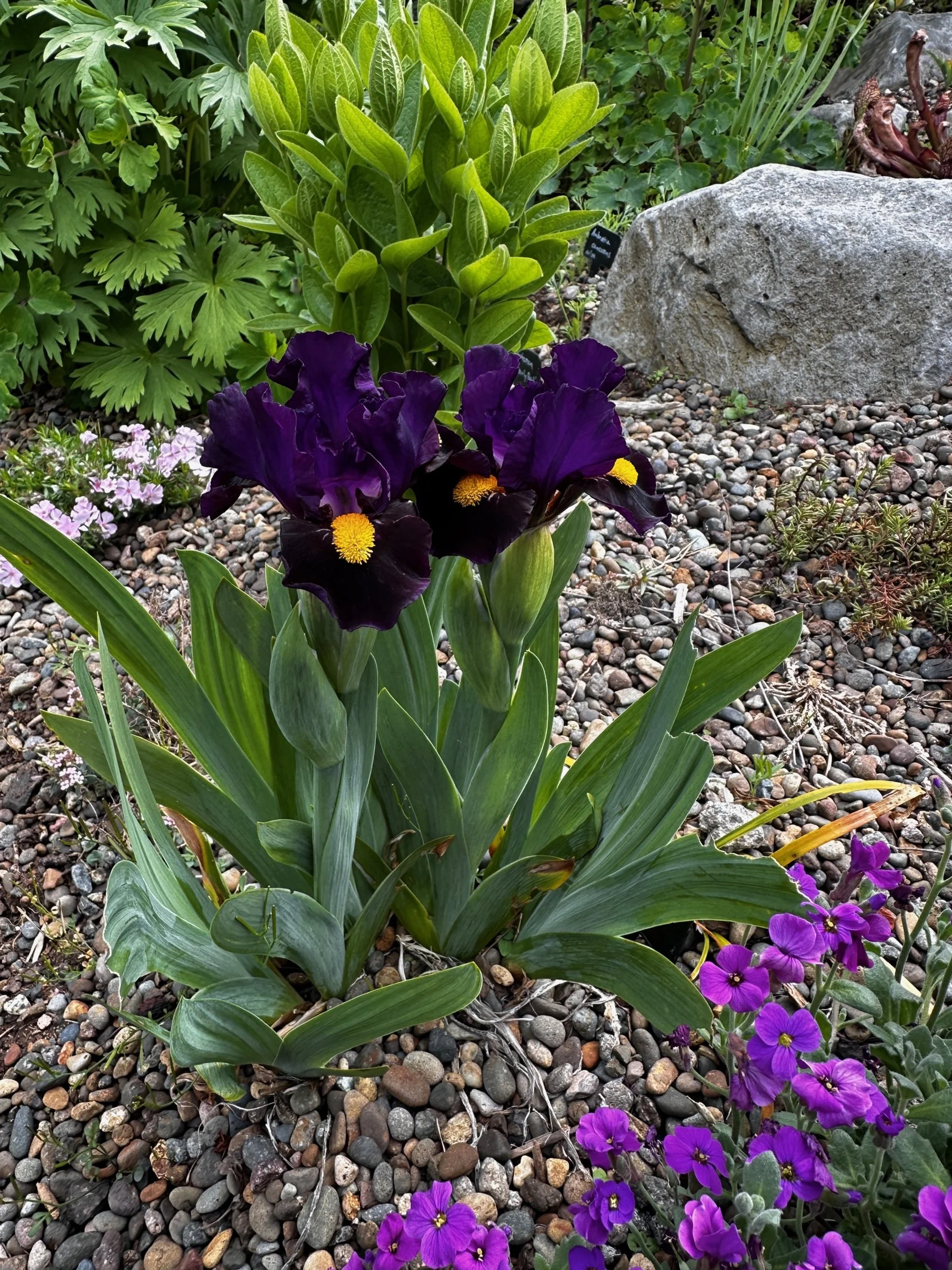
Eremogone franklinii
A true alpine treasure, Arenaria franklinii hails from the high rocky slopes and sage brush steppes of the Western Mountains forming dense, spiny cushions of compact foliage. Its finely textured, evergreen foliage hugs the ground, creating a miniature alpine landscape, while tiny, pure-white star-shaped flowers appear in late spring, like delicate snowflakes scattered across its silvery mats.
First described by the Scottish botanist David Douglas during his 1825–1827 expedition to the Pacific Northwest, the species was named in honor of Dr. John Franklin, a 19th-century botanist and surgeon, who collected the type specimen during his North American botanical expeditions. In 2004, it was reclassified into the genus Eremogone by botanists Ronald L. Hartman and Richard K. Rabeler, resulting in the current accepted name Eremogone franklinii. This is seed grown from me an several generations removed from a Ron Ratko collection, I’m trying to find the exact local still have some digging to do.
Perfect for rock gardens, alpine troughs, or crevice plantings, this rare sandwort thrives in sharply drained soil and full sun, embodying the rugged elegance and resilience of its mountainous origins. Its compact, cushion-like habit makes it both sculptural and functional, offering texture, seasonal interest, and a haven for small pollinators.
Provide full sun and sharply drained, gritty soil. Once established, it is remarkably drought-tolerant and low-maintenance, performing best in conditions that mimic its high-elevation native habitat. Avoid wet or heavy soils.
Hardiness: USDA Zones 3–7.
A true alpine treasure, Arenaria franklinii hails from the high rocky slopes and sage brush steppes of the Western Mountains forming dense, spiny cushions of compact foliage. Its finely textured, evergreen foliage hugs the ground, creating a miniature alpine landscape, while tiny, pure-white star-shaped flowers appear in late spring, like delicate snowflakes scattered across its silvery mats.
First described by the Scottish botanist David Douglas during his 1825–1827 expedition to the Pacific Northwest, the species was named in honor of Dr. John Franklin, a 19th-century botanist and surgeon, who collected the type specimen during his North American botanical expeditions. In 2004, it was reclassified into the genus Eremogone by botanists Ronald L. Hartman and Richard K. Rabeler, resulting in the current accepted name Eremogone franklinii. This is seed grown from me an several generations removed from a Ron Ratko collection, I’m trying to find the exact local still have some digging to do.
Perfect for rock gardens, alpine troughs, or crevice plantings, this rare sandwort thrives in sharply drained soil and full sun, embodying the rugged elegance and resilience of its mountainous origins. Its compact, cushion-like habit makes it both sculptural and functional, offering texture, seasonal interest, and a haven for small pollinators.
Provide full sun and sharply drained, gritty soil. Once established, it is remarkably drought-tolerant and low-maintenance, performing best in conditions that mimic its high-elevation native habitat. Avoid wet or heavy soils.
Hardiness: USDA Zones 3–7.















